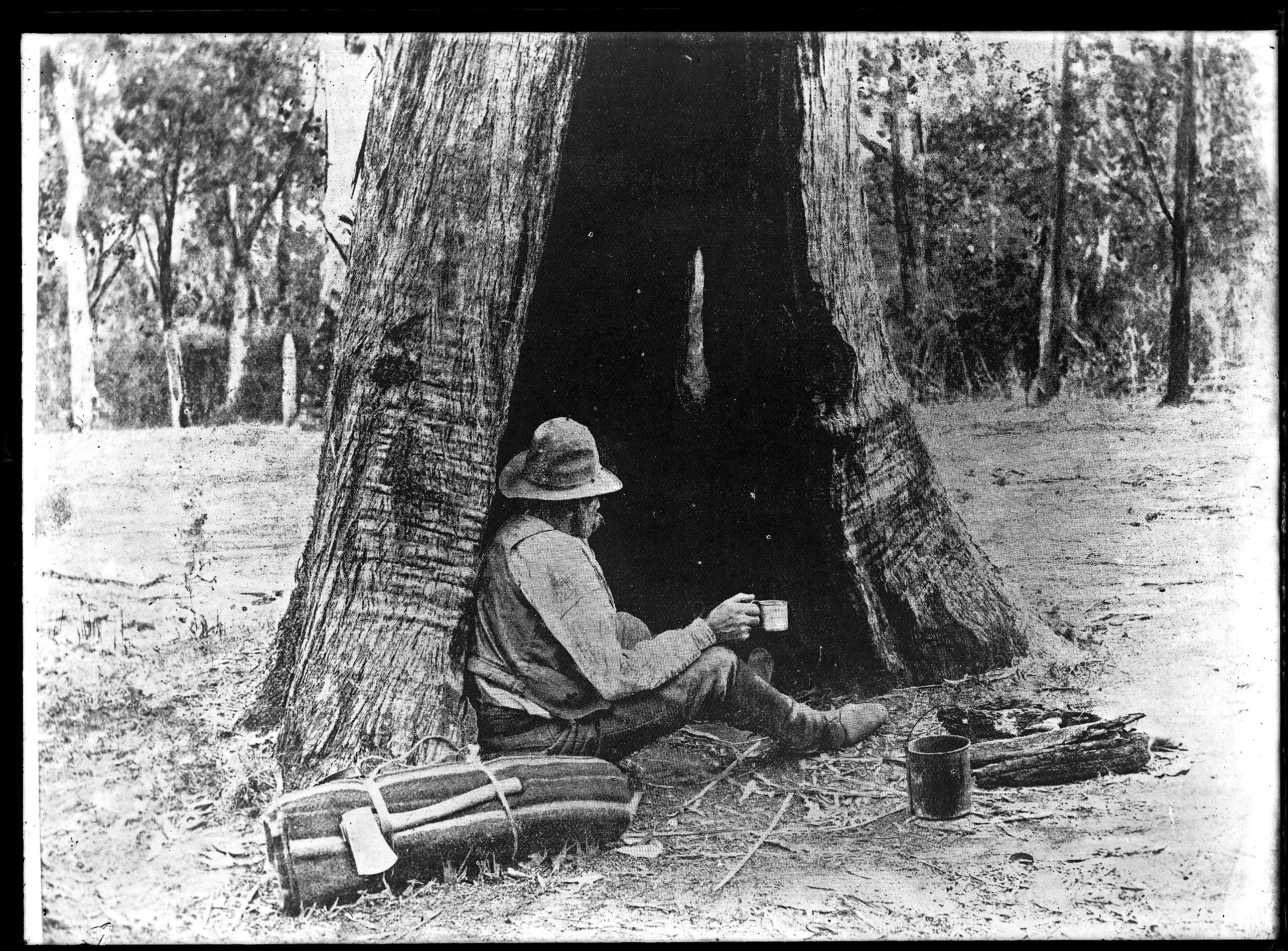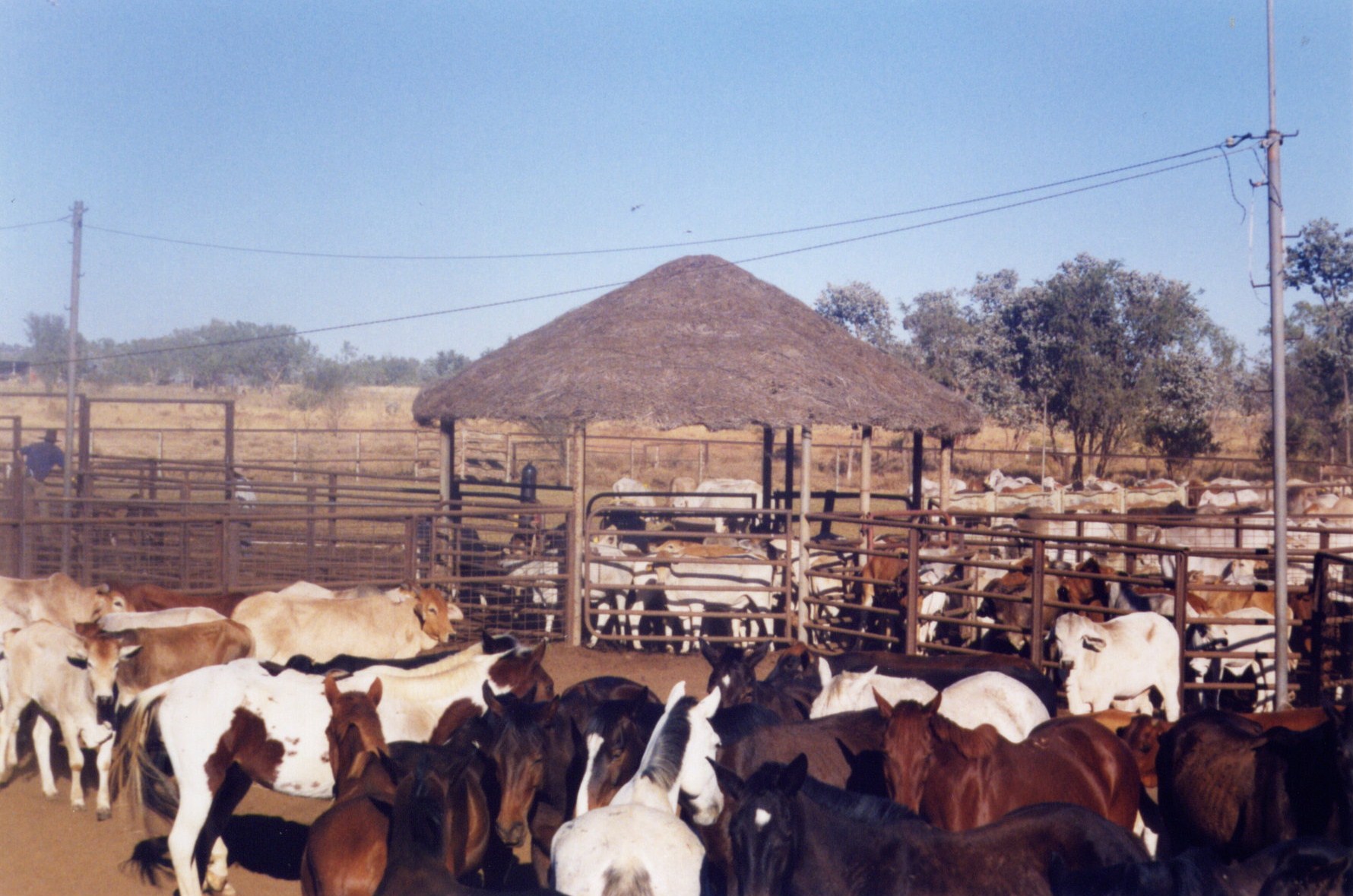|
Swagman
A swagman (also called a swaggie, sundowner or tussocker) was a transient labourer who traveled by foot from farm to farm carrying his belongings in a swag. The term originated in Australia in the 19th century and was later used in New Zealand. Swagmen were particularly common in Australia during times of economic uncertainty, such as the 1890s and the Great Depression of the 1930s. Many unemployed men travelled the rural areas of Australia on foot, their few meagre possessions rolled up and carried in their swag. Their swag was frequently referred to as "Matilda", hence Waltzing Matilda refers to walking with their swag. Typically, they would seek work in farms and towns they travelled through, and in many cases the farmers, if no permanent work was available, would provide food and shelter in return for some menial task. The figure of the "jolly swagman", represented most famously in Banjo Paterson's bush poem "Waltzing Matilda", became a folk hero in 19th-century Austra ... [...More Info...] [...Related Items...] OR: [Wikipedia] [Google] [Baidu] |
Waltzing Matilda
"Waltzing Matilda" is a song developed in the Australian style of poetry and folk music called a bush ballad. It has been described as the country's "unofficial national anthem". The title was Australian slang for travelling on foot (waltzing) with one's belongings in a "matilda" (Swag (bedroll), swag) slung over one's back, a slang expression that may have originally been repurposed from a work of light verse by Charles Godfrey Leland. The song narrates the story of an itinerant worker, or "swagman", boiling a Billycan, billy at a bush camp and capturing a stray jumbuck (sheep) to eat. When the jumbuck's owner, a squatting (pastoral), squatter (Pastoralism, grazier), and three troopers (mounted policemen) pursue the swagman for theft, he declares "You'll never catch me alive!" and commits suicide by drowning himself in a nearby billabong (Oxbow lake, watering hole), after which his ghost haunts the site. The original lyrics were composed in 1895 by Australian poet Banjo Pate ... [...More Info...] [...Related Items...] OR: [Wikipedia] [Google] [Baidu] |
Swag (bedroll)
In Australia, a swag is a portable sleeping unit. It is normally a bundle of belongings rolled in a traditional fashion to be carried by a foot traveller in the bush. Before motor transport was common, foot travel over long distances was essential to agriculture in the Australian bush. It is sometimes referred to as a "backpack bed". Swags have been carried by shearers, miners, the unemployed, and many others, some of whom would have been happy to have been called swagmen and some not. History In the early 1800s, the term ''swag'' was used by British thieves to describe any amount of stolen goods. One definition given in Francis Grose's 1811 ''Dictionary of the Vulgar Tongue'' is "any booty you have lately obtained,.... To carry the swag is to be the bearer of the stolen goods to a place of safety." James Hardy Vaux, a convict in Australia, used the term for similar purposes in his memoirs written in 1812 and published in 1819. By the 1830s, the term in Australia had transferr ... [...More Info...] [...Related Items...] OR: [Wikipedia] [Google] [Baidu] |
Squatter (pastoral)
In the history of Australia, squatting was the act of occupying tracts of Crown land, typically to graze livestock. Though most squatters initially held no legal rights to the land they occupied, the majority were gradually recognised by successive colonial authorities as the legitimate owners of the land due to being among the first (and often only) white settlers in their area. The term ''squattocracy'', a play on aristocracy, was coined to refer to squatters as a social class and the immense sociopolitical power they possessed. Evolution of meaning The term ''squatter'' derives from its English usage as a term of contempt for a person who had taken up residence at a place without having legal claim. The use of ''squatter'' in the early years of British settlement of Australia had a similar connotation, referring primarily to a person who had occupied pastoral land not granted to them by the colonial authorities. From the mid-1820s, however, the occupation of legally unoccu ... [...More Info...] [...Related Items...] OR: [Wikipedia] [Google] [Baidu] |
Sheep Shearing
Sheep shearing is the process by which the Wool, woollen fleece of a sheep is cut off. The person who removes the sheep's wool is called a ''Sheep shearer, shearer''. Typically each adult sheep is shorn once each year (depending upon dialect, a sheep may be said to have been "shorn", "sheared" or "shore" [in Australia]). The annual shearing most often occurs in a shearing shed, a facility especially designed to process often hundreds and sometimes more than 3,000 sheep per day. A working group of shearers and accompanying wool workers is known as a ''shearing gang''. Sheep are shorn in all seasons including winter, depending on the climate, management requirements and the availability of a Wool classing, woolclasser and wikt:Special:Search/shearer, shearers. Ewes are normally shorn prior to lambing in the warmer months, but consideration is typically made as to the welfare of the lambs by not shearing during cold climate winters. However, in high country regions, pre lamb she ... [...More Info...] [...Related Items...] OR: [Wikipedia] [Google] [Baidu] |
Station (Australian Agriculture)
In Australia and New Zealand, a station is a large landholding used for producing livestock, predominantly cattle or sheep, that needs an extensive range of grazing land. The owner of a station is called a pastoralism, pastoralist or a wikt:grazier, grazier, corresponding to the North American term "rancher". Originally ''station'' referred to the homestead (buildings), homestead – the owner's house and associated outbuildings of a pastoral property, but it now generally refers to the whole holding. Stations in Australia are on Crown land pastoral leases, and may also be known more specifically as sheep stations or cattle stations, as most are stock-specific, dependent upon the region and rainfall. If they are very large, they may also have a subsidiary homestead, known as an outstation. Sizes Sheep and cattle stations can be thousands of square kilometres in area, with the nearest neighbour being hundreds of kilometres away. Anna Creek Station in South Australia is th ... [...More Info...] [...Related Items...] OR: [Wikipedia] [Google] [Baidu] |
Sheep Station
A sheep station is a large property ( station, the equivalent of a ranch) in Australia or New Zealand, whose main activity is the raising of sheep for their wool and/or meat. In Australia, sheep stations are usually in the south-east or south-west of the country. In New Zealand the Merinos are usually in the high country of the South Island. These properties may be thousands of square kilometres in size and run low stocking rates to be able to sustainably provide enough feed and water for the stock. In Australia, the owner of a sheep station may be called a pastoralist, a grazier, or formerly a squatter (as in " Waltzing Matilda"), when their sheep grazing land was referred to as a sheep run. History Sheep stations and sheep husbandry began in Australia when the British colonisers started raising sheep in 1788 at Sydney Cove. Improvements and facilities In the Australian and New Zealand context, shearing involves an annual muster of sheep to be shorn, and the shearin ... [...More Info...] [...Related Items...] OR: [Wikipedia] [Google] [Baidu] |
Canowie Station
Canowie or Canowie Station was a former pastoral lease located about north west of Hallett and south west of Terowie in the state of South Australia. Locality The former Canowie Station was situated midway between Hallett and Jamestown in an amphitheatre of green bald hills, the north-south trending Browne Hill Range surrounding it on the western side, the eastern opening out into a broad valley. The country around is bare of timber, with the exception of plantations of various kinds of eucalypt planted around 1880. The estate consisted principally of rich land, well suited for agriculture, about 60,000 acres in extent, freehold, and depastured 60,000 sheep and about 1000 pure Shorthorn cattle. This article goes into the history of Canowie stud animals in considerable detail. Foundations The first European to visit the district was Edward John Eyre in 1839. On 11 February 1846 the brothers Drs WJ and JH Browne secured Occupational Lease No.129 comprising 43,000 hectares ... [...More Info...] [...Related Items...] OR: [Wikipedia] [Google] [Baidu] |
Elderly Swagman
Old age is the range of ages for people nearing and surpassing life expectancy. People who are of old age are also referred to as: old people, elderly, elders, senior citizens, seniors or older adults. Old age is not a definite biological stage: the chronological age denoted as "old age" varies culturally and historically. Some disciplines and domains focus on the aging and the aged, such as the organic processes of aging (senescence), medical studies of the aging process (gerontology), diseases that afflict older adults (geriatrics), technology to support the aging society (gerontechnology), and leisure and sport activities adapted to older people (such as senior sport). Older people often have limited regenerative abilities and are more susceptible to illness and injury than younger adults. They face social problems related to retirement, loneliness, and ageism. In 2011, the United Nations proposed a human-rights convention to protect old people. History European The hist ... [...More Info...] [...Related Items...] OR: [Wikipedia] [Google] [Baidu] |
Federation Of Australia
The Federation of Australia was the process by which the six separate British self-governing colonies of Queensland, New South Wales, Victoria, Tasmania, South Australia (which also governed what is now the Northern Territory), and Western Australia agreed to unite and form the Commonwealth of Australia, establishing a system of federalism in Australia. The colonies of Fiji and New Zealand were originally part of this process, but they decided not to join the federation. Following federation, the six colonies that united to form the Commonwealth of Australia as states kept the systems of government (and the bicameral legislatures) that they had developed as separate colonies, but they also agreed to have a federal government that was responsible for matters concerning the whole nation. When the Constitution of Australia came into force, on 1 January 1901, the colonies collectively became states of the Commonwealth of Australia. The efforts to bring about federation in the ... [...More Info...] [...Related Items...] OR: [Wikipedia] [Google] [Baidu] |






